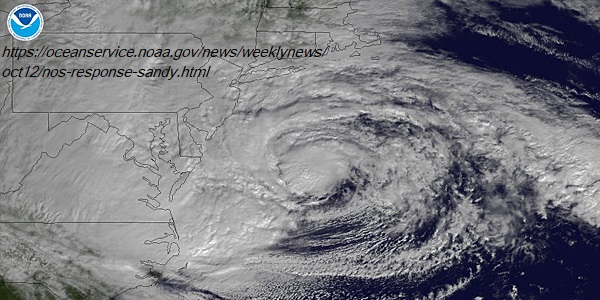Reuters reports on a new study in the journal Nature, which found that 13% or $8 billion of the $63 billion in damage caused by Sandy is attributable to the sea level rise from climate change. The study found that an additional 70,000 people and 36,000 more homes were affected by Sandy, because of sea level rise from climate change. Sandy was a superstorm that started as a hurricane in October 2012.
Sandy was category 3 for windspeed, and it carried a large amount of water that made for a very large storm surge as it made landfall over New Jersey in 2012. Sandy was so large it affected people from Georgia to Ontario, Canada. It even caused a blizzard over the Appalachians when Sandy collided with a winter storm from the midwest. It damaged many islands in the Caribbean Sea, with the Reuters article noting it killed 233 people.
The reason that climate change has caused sea level rise is for 2 reasons: the oceans are warmer and warmer water expands to take up more space, and glaciers, arctic, and antarctic ice is melting adding more water to the oceans.
This new study was able to determine how much of Sandy’s extra damage was due to sea level rise from climate change. It did not look at other aspects of how climate change makes storms more intense, such as warmer water giving more energy to the storm and making the winds stronger when it was a hurricane in the Caribbean, or warmer air being able to hold more moisture which fell as rain and snow when Sandy collided with cold air in a winter storm coming from the midwest.
Superstorm Sandy happened in 2012, and we have had 9 years of warming since then setting even more new records of the warmest year ever recorded. Last year in 2020, there were 22 different weather and climate disasters that caused more than $1 billion in damages, totaling $95 billion in damages overall.
You can watch a video of Sandy making landfall on this NOAA/National Environmental Satellite, Data, and Information Service (NESDIS) website.
You can watch this NOAA video explaining how Sandy became such a strong storm here.
Read the Reuters article here.
Read the study in Nature here.
05/19/2021





